Audi Q4 e-tron vs Mercedes EQE SUV – Performance, range & efficiency compared
Both models have their strengths – but which one suits you more?
Compare performance, efficiency, price and space directly: Audi Q4 e-tron or Mercedes EQE SUV?
Costs and Efficiency:
Price and efficiency are key factors when choosing a car – and this is often where the real differences emerge.
Audi Q4 e-tron has a decisively advantage in terms of price – it starts at 39600 £, while the Mercedes EQE SUV costs 71600 £. That’s a price difference of around 31996 £.
In terms of energy consumption, the advantage goes to the Audi Q4 e-tron: with 15.90 kWh per 100 km, it’s to a small extent more efficient than the Mercedes EQE SUV with 18.30 kWh. That’s a difference of about 2.40 kWh.
As for range, the Mercedes EQE SUV performs slight better – achieving up to 611 km, about 57 km more than the Audi Q4 e-tron.
Engine and Performance:
Under the bonnet, it becomes clear which model is tuned for sportiness and which one takes the lead when you hit the accelerator.
When it comes to engine power, the Mercedes EQE SUV has a significantly edge – offering 625 HP compared to 340 HP. That’s roughly 285 HP more horsepower.
In acceleration from 0 to 100 km/h, the Mercedes EQE SUV is convincingly quicker – completing the sprint in 3.70 s, while the Audi Q4 e-tron takes 5.40 s. That’s about 1.70 s faster.
In terms of top speed, the Mercedes EQE SUV performs evident better – reaching 240 km/h, while the Audi Q4 e-tron tops out at 180 km/h. The difference is around 60 km/h.
There’s also a difference in torque: Mercedes EQE SUV pulls evident stronger with 950 Nm compared to 679 Nm. That’s about 271 Nm difference.
Space and Everyday Use:
Beyond pure performance, interior space and usability matter most in daily life. This is where you see which car is more practical and versatile.
Both vehicles offer seating for 5 people.
In curb weight, Audi Q4 e-tron is slightly lighter – 2035 kg compared to 2440 kg. The difference is around 405 kg.
In terms of boot space, the Audi Q4 e-tron offers slight more room – 535 L compared to 520 L. That’s a difference of about 15 L.
In maximum load capacity, the Mercedes EQE SUV performs slightly better – up to 1675 L, which is about 185 L more than the Audi Q4 e-tron.
When it comes to payload, Mercedes EQE SUV somewhat takes the win – 580 kg compared to 515 kg. That’s a difference of about 65 kg.
Who wins the race?
The Mercedes EQE SUV proves to be is largely superior and therefore becomes our DriveDuel Champion!
Mercedes EQE SUV is the better all-rounder in this comparison.
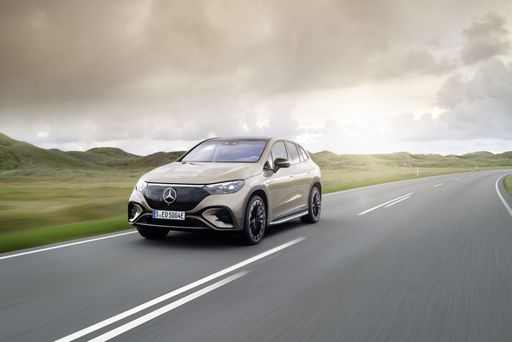
Mercedes EQE SUV
Audi Q4 e-tron
The Audi Q4 e-tron seamlessly combines sustainable driving with premium comfort, embodying the brand's commitment to electric mobility. Its sleek design and spacious interior create an inviting atmosphere, perfect for those who appreciate both style and practicality. With a focus on innovative technology, the Q4 e-tron offers a dynamic driving experience that appeals to modern drivers seeking eco-friendly alternatives.
details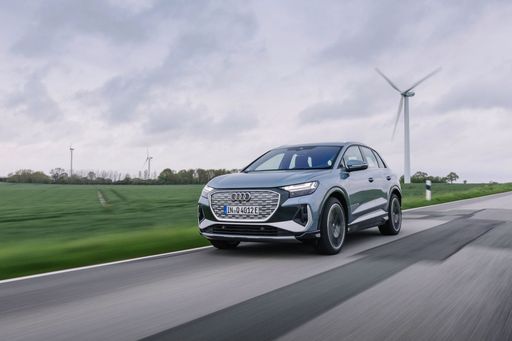 @ audi-mediacenter.com
@ audi-mediacenter.com
 @ audi-mediacenter.com
@ audi-mediacenter.com
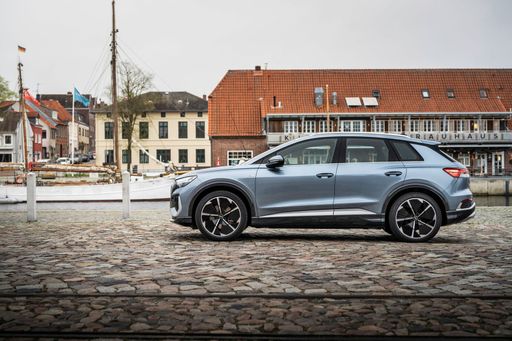 @ audi-mediacenter.com
@ audi-mediacenter.com
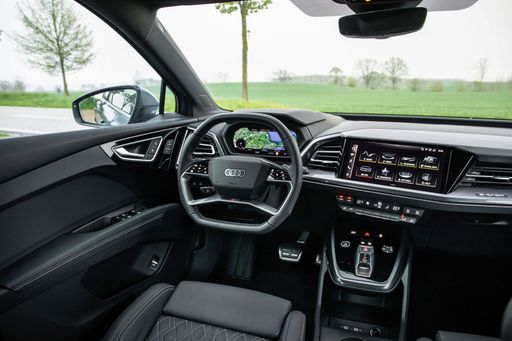 @ audi-mediacenter.com
@ audi-mediacenter.com
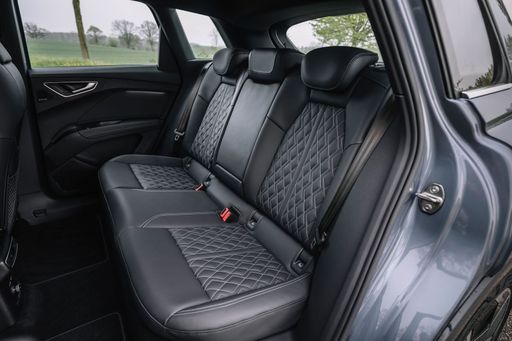 @ audi-mediacenter.com
@ audi-mediacenter.com
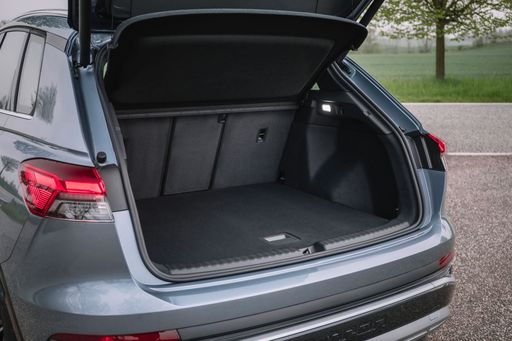 @ audi-mediacenter.com
@ audi-mediacenter.com
Mercedes EQE SUV
The Mercedes-Benz EQE SUV represents a fusion of advanced electric mobility and luxurious design, offering a refined driving experience that aligns with the brand's renowned legacy. Inside, the cabin is adorned with high-quality materials and state-of-the-art technology, providing both comfort and functionality for modern drivers. Its dynamic exterior is crafted to enhance aerodynamics while maintaining a distinctive and elegant presence on the road.
details @ group-media.mercedes-benz.com
@ group-media.mercedes-benz.com
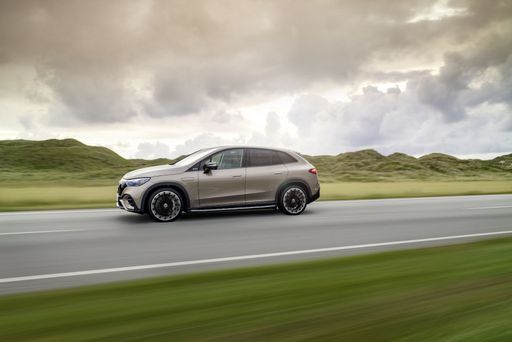 @ group-media.mercedes-benz.com
@ group-media.mercedes-benz.com
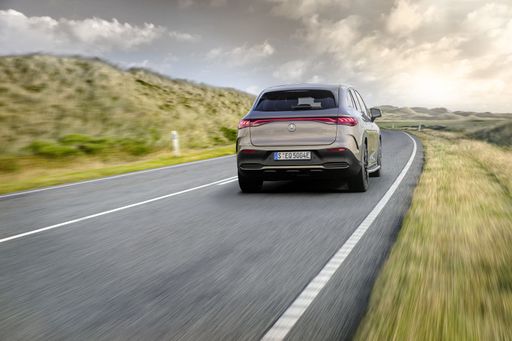 @ group-media.mercedes-benz.com
@ group-media.mercedes-benz.com
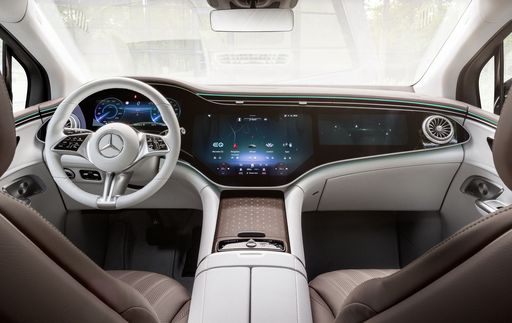 @ group-media.mercedes-benz.com
@ group-media.mercedes-benz.com

|

|
|
|
|
Costs and Consumption |
|
|---|---|
|
Price
39600 - 58800 £
|
Price
71600 - 125100 £
|
|
Consumption L/100km
-
|
Consumption L/100km
-
|
|
Consumption kWh/100km
15.9 - 17.4 kWh
|
Consumption kWh/100km
18.3 - 23.1 kWh
|
|
Electric Range
406 - 554 km
|
Electric Range
453 - 611 km
|
|
Battery Capacity
59 - 77 kWh
|
Battery Capacity
90.5 - 96 kWh
|
|
co2
0 g/km
|
co2
0 g/km
|
|
Fuel tank capacity
-
|
Fuel tank capacity
-
|
Dimensions and Body |
|
|---|---|
|
Body Type
SUV
|
Body Type
SUV
|
|
Seats
5
|
Seats
5
|
|
Doors
5
|
Doors
4
|
|
Curb weight
2035 - 2235 kg
|
Curb weight
2440 - 2615 kg
|
|
Trunk capacity
520 - 535 L
|
Trunk capacity
520 L
|
|
Length
4588 mm
|
Length
4863 - 4879 mm
|
|
Width
1865 mm
|
Width
1940 mm
|
|
Height
1614 - 1632 mm
|
Height
1672 - 1685 mm
|
|
Max trunk capacity
1460 - 1490 L
|
Max trunk capacity
1675 L
|
|
Payload
505 - 515 kg
|
Payload
505 - 580 kg
|
Engine and Performance |
|
|---|---|
|
Engine Type
Electric
|
Engine Type
Electric
|
|
Transmission
Automatic
|
Transmission
Automatic
|
|
Transmission Detail
Reduction Gearbox
|
Transmission Detail
Reduction Gearbox
|
|
Drive Type
Rear-Wheel Drive, All-Wheel Drive
|
Drive Type
All-Wheel Drive, Rear-Wheel Drive
|
|
Power HP
204 - 340 HP
|
Power HP
265 - 625 HP
|
|
Acceleration 0-100km/h
5.4 - 8.1 s
|
Acceleration 0-100km/h
3.7 - 7.1 s
|
|
Max Speed
160 - 180 km/h
|
Max Speed
210 - 240 km/h
|
|
Torque
310 - 679 Nm
|
Torque
550 - 950 Nm
|
|
Number of Cylinders
-
|
Number of Cylinders
-
|
|
Power kW
150 - 250 kW
|
Power kW
195 - 460 kW
|
|
Engine capacity
-
|
Engine capacity
-
|
General |
|
|---|---|
|
Model Year
2023 - 2025
|
Model Year
2023 - 2025
|
|
CO2 Efficiency Class
A
|
CO2 Efficiency Class
A
|
|
Brand
Audi
|
Brand
Mercedes-Benz
|
What drive types are available for the Audi Q4 e-tron?
The Audi Q4 e-tron is offered with Rear-Wheel Drive or All-Wheel Drive.
The prices and data displayed are estimates based on German list prices and may vary by country. This information is not legally binding.
